Affiliate links on Android Authority may earn us a commission. Learn more.
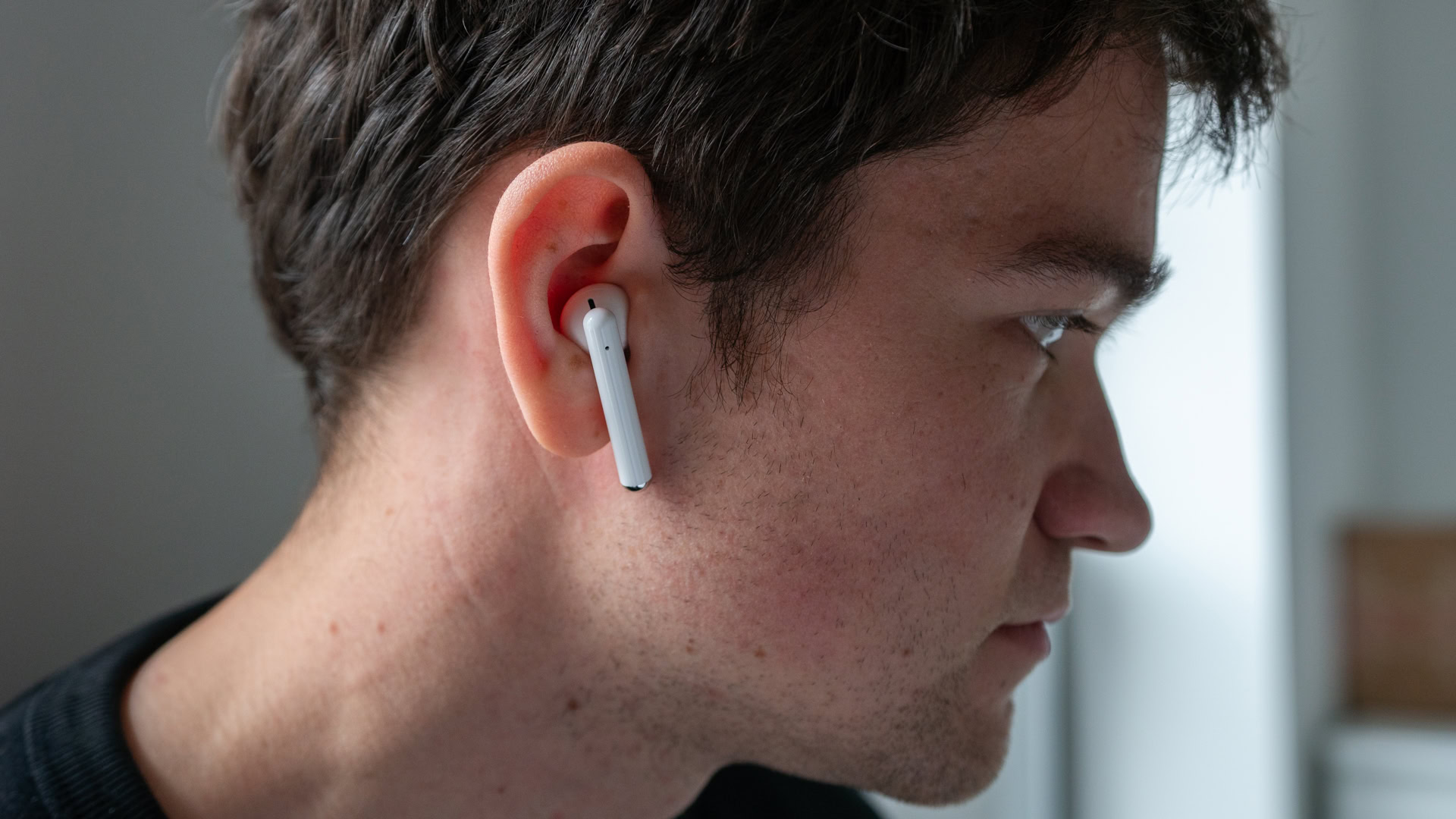
Huawei FreeBuds 3
What we like
What we don't like
Huawei FreeBuds 3
True wireless earbuds are becoming popular with users and manufacturers alike. The last few months brought lots of new options to market, including some from companies that you wouldn’t normally associate with audio products, such as Microsoft and Amazon. It’s Apple, however, that continues to dominate with its AirPods and brand new AirPods Pro.
The HUAWEI FreeBuds 3 are HUAWEI’s answer to the AirPods 2. They look very similar, they come with a similar charging case, and have many of the same features.
However, the FreeBuds 3 are not just an answer to another company’s hit product. They stand on their own, thanks to features like active noise-cancelling. That’s a world first for open-fit earbuds, and something that Apple only added earlier this week on the AirPods Pro.
The new FreeBuds cost €179, so they’re not exactly an impulse buy. Should you get them? Find out in our HUAWEI Freebuds 3 review.
As of May 2020, I updated this review with further impressions collected over multiple months of usage. You can read the additions in the dedicated section below. Also added details on availability and software updates, and details about the new HUAWEI Freebuds 3i version, which brings a slight redesign and silicon tips.
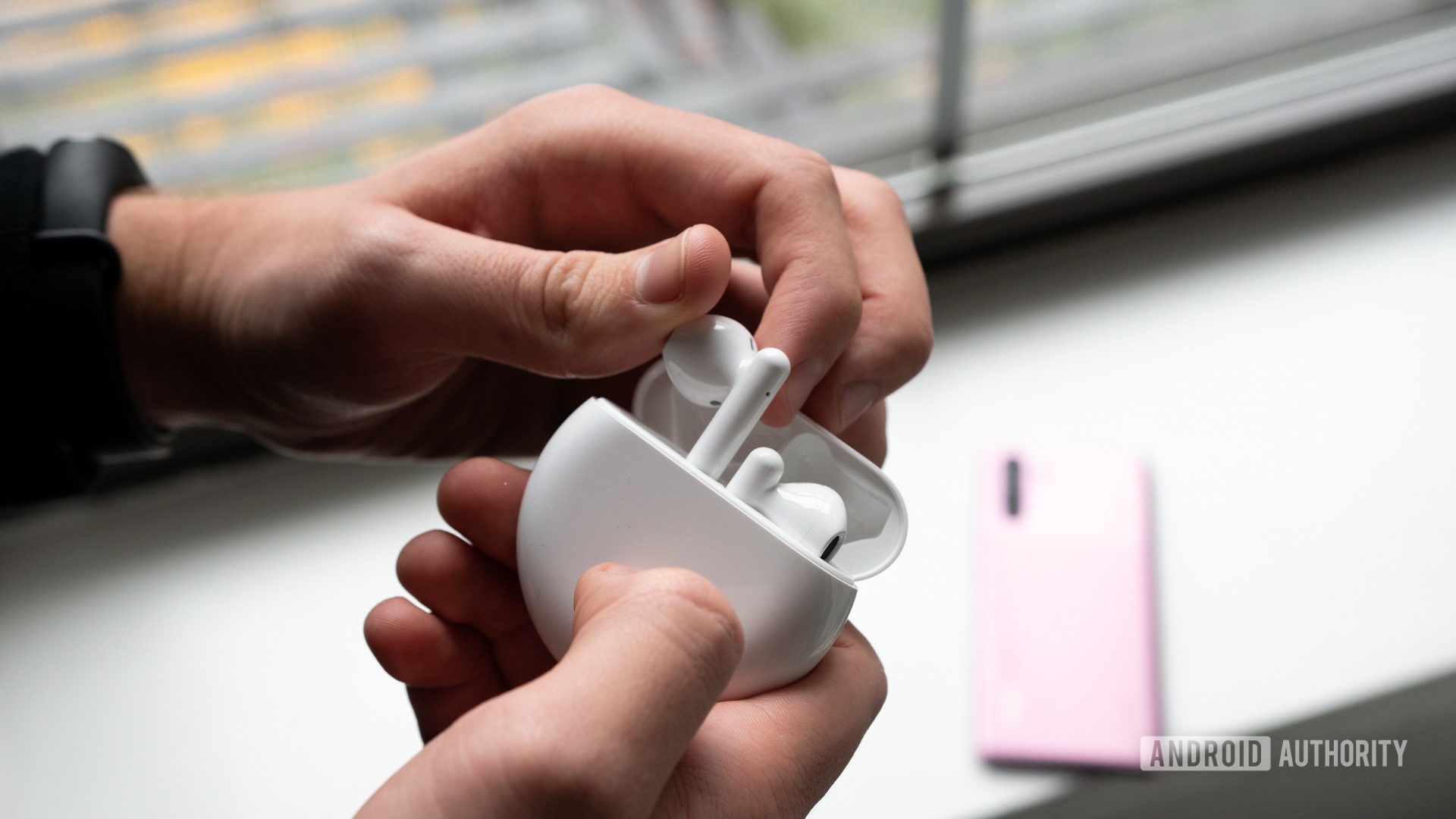
HUAWEI FreeBuds 3 review: Tech and specs
- Kirin A1 chip with Bluetooth 5.1 and BLE 5.1 (world first)
- Codecs: AAC, SBC
- Isochronous dual channel connection (smaller power consumption, higher transmission rate)
- Active noise cancellation (world first for open-fit earphones), adaptive, up to 15dB
- 190ms minimum latency (with compatible devices)
- 2.5 second connection time
- Bone sensor for clear voice pick-up
- Anti-wind-noise design
- IPX4
- 14mm driver with dedicated bass tube
- Wired charging: USB Type-C (5V 1.2A 6W)
- Wireless charging: Qi standard (2W)
- Battery: 30mAh per earbud, 410mAh per case.
- Battery life: 4h (earbuds only), 20h (with charging case)
- Weight: about 4.5g per earbud, 48g for the case
What are the HUAWEI FreeBuds 3 like?
You saw it coming: the FreeBuds 3 are unashamed AirPods copycats. They look very similar to the Apple AirPods 2, to the point that it’s hard to tell the two products apart.
Just like the AirPods 2, but unlike the AirPods Pro, the FreeBuds 3 use an open-fit design, meaning they just sit in your ear, rather than plug into your ear canal. This is a mixed blessing.
They are very comfortable and you can wear them for hours at a time and literally forget you have them on. At the same time, the design provides almost no insulation from outside noise, which impacts sound quality. The active noise cancelling helps – a little – but it’s no match for anything louder than, say, the whirring of a ceiling fan. More about the HUAWEI FreeBuds 3 sound quality below.
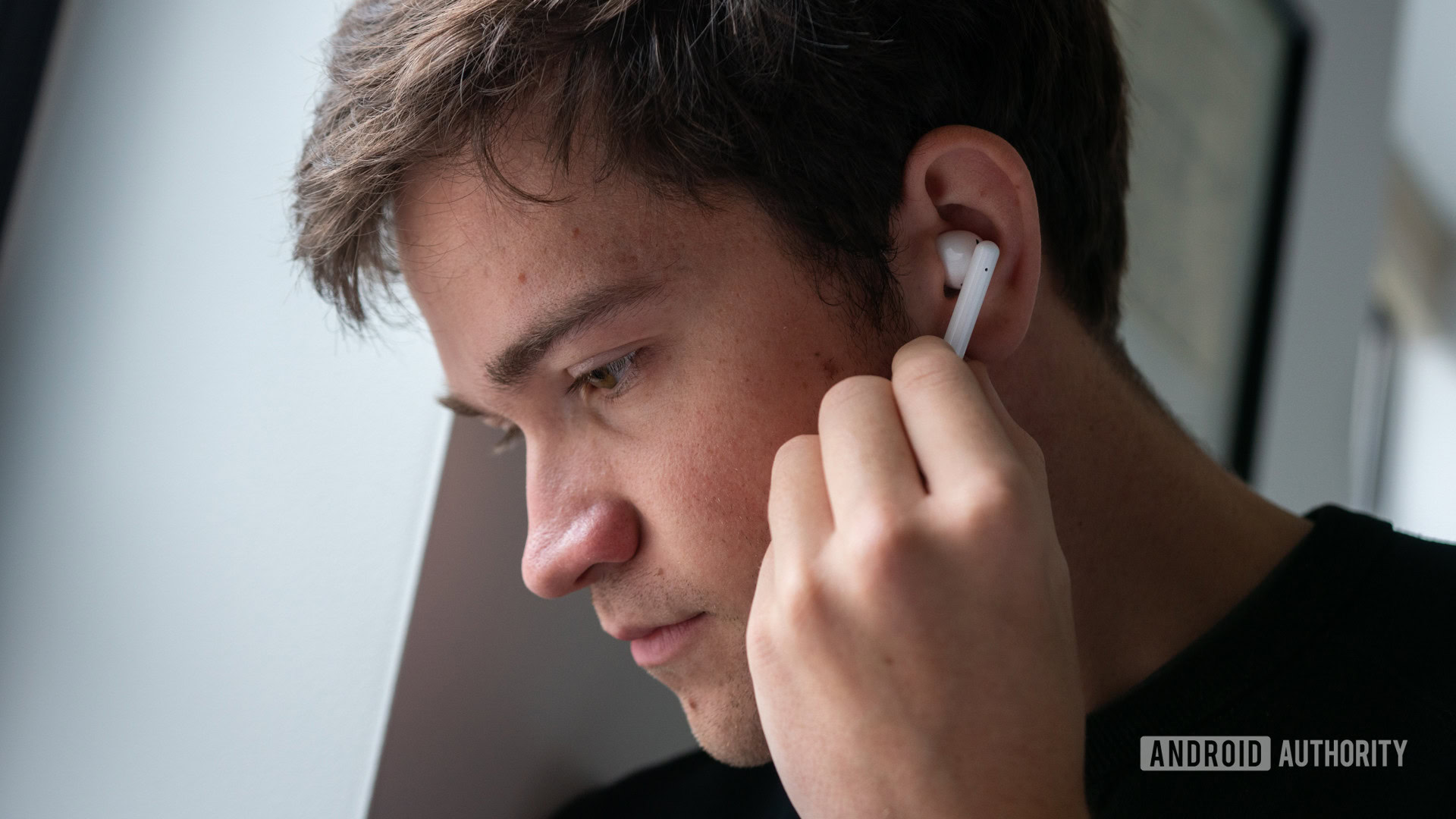
The buds fit comfortably in my ears, and basically refused to fall out even when I tried to shake them off. Your mileage may vary, and as a caveat, I didn’t use these buds while working out.
The buds fit comfortably in my ears, and basically refused to fall out.
Like many other true wireless earbuds, the HUAWEI FreeBuds 3 case doubles as a charger, and includes its own battery, allowing you to charge the buds on the go. The case has a capacity of 410mAh, and HUAWEI says that should be enough to charge the earbuds about four times over.
The case is a big part of the FreeBuds 3 experience – just like the earbuds, it feels lightweight, but well-made, even if it’s not particularly fancy. The spring-loaded lid closes with a satisfying snap. My only concern is the long-term durability of the hinge, as it’s already become a bit looser after only a few days of use.
The FreeBuds 3 are IPX4-certified. That means you shouldn’t worry about sweat or rain, but don’t try to wash them or use them in the pool.
How do you use the FreeBuds 3?
You can use the FreeBuds 3 either on their own or using HUAWEI’s AI Life app [no longer available].
To pair the FreeBuds 3, open the case (leave the earphones in) and push the button on the side of the case for two seconds until the LED inside the case starts blinking. This will put them into pairing mode. You can then connect them to your favorite device using the Bluetooth menu.
I used the FreeBuds with half a dozen devices running Android, Windows, and iOS, and they connected quickly and hassle-free every single time.
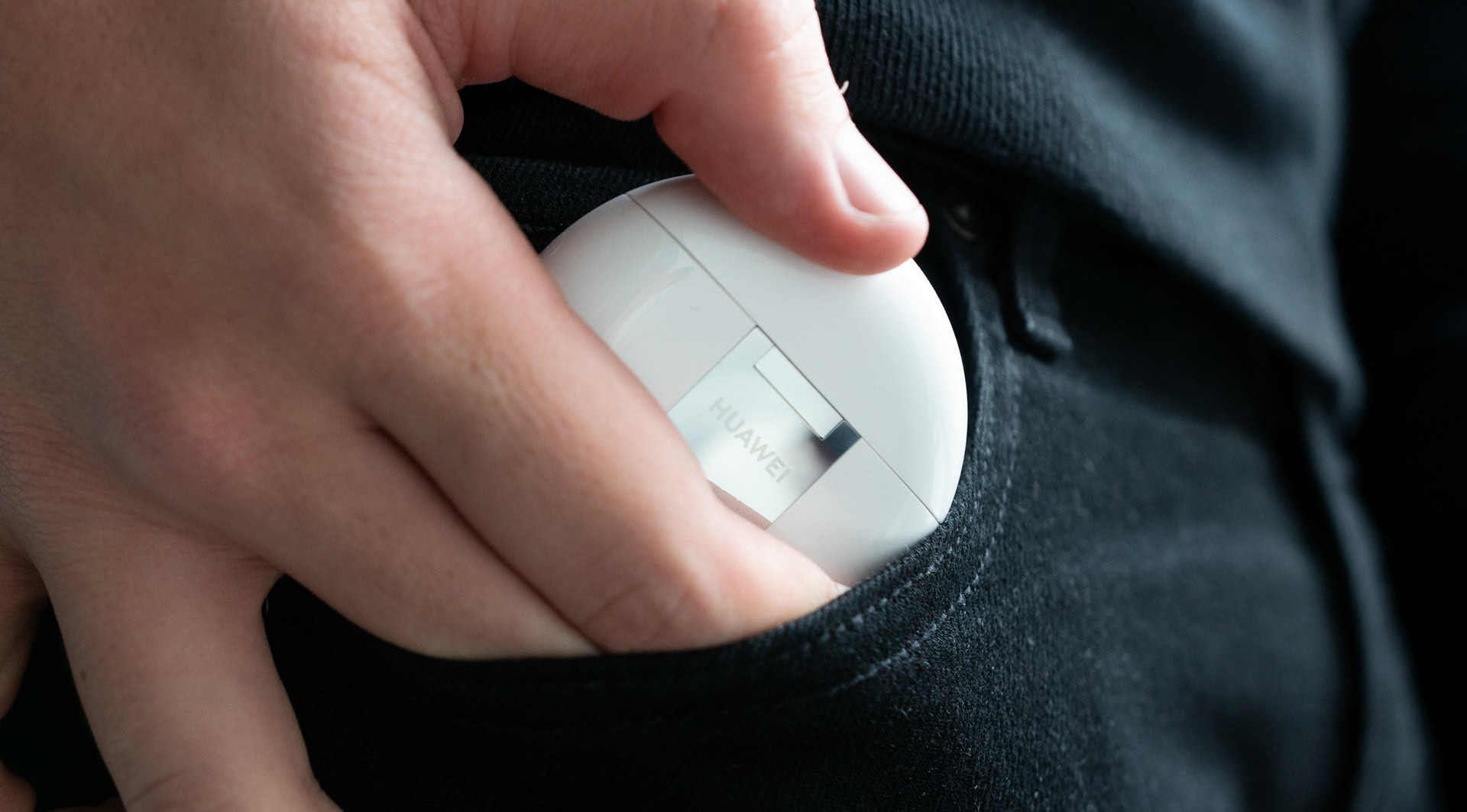
The FreeBuds 3 lack any physical controls, except for the pairing button on the case. Instead, you control them with double-tap gestures or through the AI Life app.
Out of the box, a double tap on the left earbud toggles the active noise cancelling. A double tap on the right bud starts playback (if it’s stopped) or skips to the next track.
The earbuds usually detect taps accurately, but they’re not foolproof. Occasionally they fail to detect a double tap. The reverse is more annoying: a few times, when I was simply adjusting the right earbud in my ear, the touch was interpreted as a double tap, resulting in a skipped track.
You can adjust what the double-tap gestures do from HUAWEI’s AI Life app [no longer available]. You can set them to play/pause media or to wake the voice assistant, or just disable them completely. You can also adjust the strength of the active noise cancellation.
If you don’t install AI Life, the FreeBuds will work like any other Bluetooth headphones. You still get the double-tap support, but you won’t be able to change or disable the gestures. However, if you can connect them to a HUAWEI phone (maybe in a store), any changes you make to the double-tap gestures will carry over to your non-HUAWEI devices.
The AI Life is a nice touch, but it’s not a requirement to use and enjoy the FreeBuds 3.
The AI Life is a nice touch, but it’s not a requirement to use and enjoy the FreeBuds 3. It just adds a bit of extra convenience.
However, there are a few perks that are exclusive to HUAWEI devices running EMUI 10. These are Wearing Detection, which stops and resumes playback when you take your earbuds out and put them back in, and Pop-up Window, which shows a pop-up screen on your phone in order to make it easier to connect the earphones.
Huawei’s “Isochronous Dual Channel connection” technology is also exclusive to EMUI 10 devices. It sends data to each earbud individually, which has a few benefits: improved battery life, lower latency, and higher transmission rates. Other manufacturers send data to one earbud, and then it’s bounced off to the other earbud, which is less efficient.
How and when do you charge them?
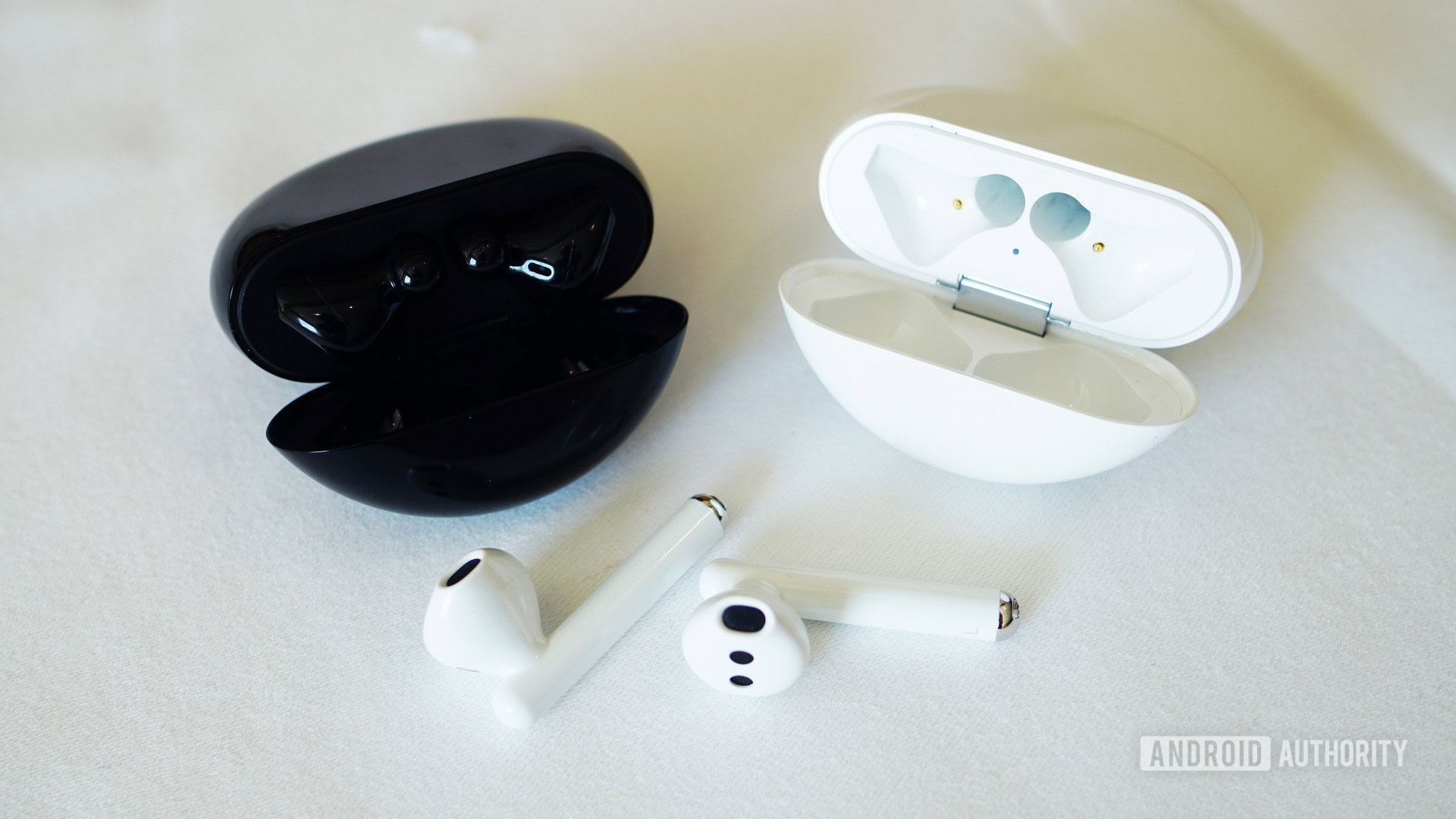
You can charge the FreeBuds 3 over a USB-C cable or wirelessly. If you go the wireless route, you can use a dedicated charger like HUAWEI’s own wireless SuperCharger, or a phone with reverse wireless charging, like the HUAWEI Mate 30 Pro or the Samsung Galaxy S10 or Note 10.
With a full charge, the FreeBuds 3 should last you about four hours of continuous playback. Enabling the active noise cancelling will draw a bit more battery life. You’ll get the best results with a HUAWEI device running EMUI 10. A fully charged case will add an extra 16 hours, bringing total battery life to 20 hours.
Most users won’t listen for four hours straight, so it’s good that the case acts as a portable charger. If you’re not a heavy listener, you’ll probably get away with charging once a week or so.
What do the HUAWEI FreeBuds 3 sound like?
I was pleasantly surprised by the sound quality of the HUAWEI FreeBuds 3. The sound is rich and pleasant around the middle. You don’t get the deep rumbling bass you’d get from other types of headphones, but it’s more than adequate for my tastes and listening habits. The bass in this particular form factor is quite impressive.
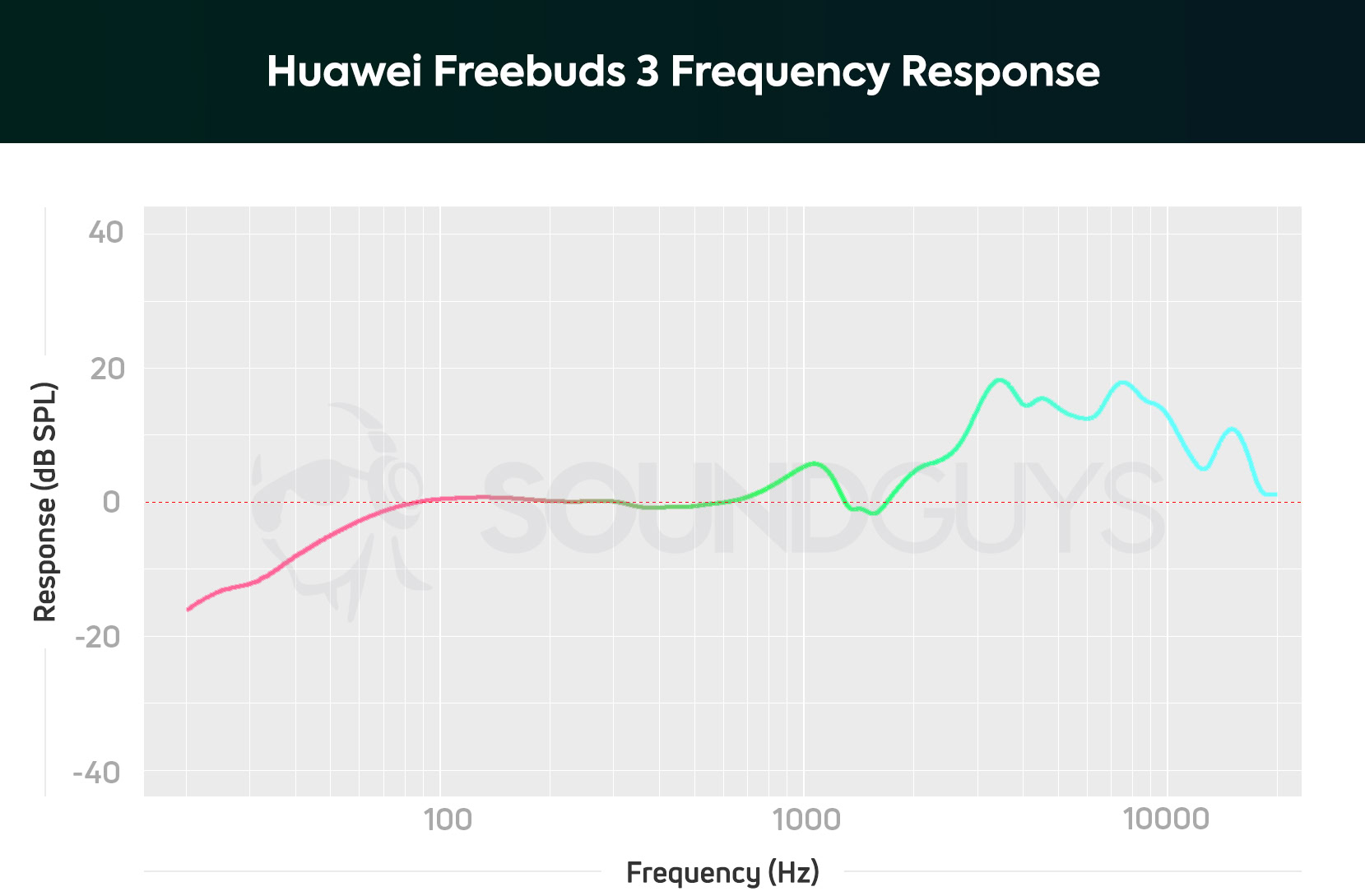
Because there’s almost zero physical isolation, outside noise tends to drown out some frequencies, especially at the low end. That’s the biggest weakness of open-fit designs, and something you’ll have to deal with the FreeBuds 3 (and also the Apple AirPods 2).
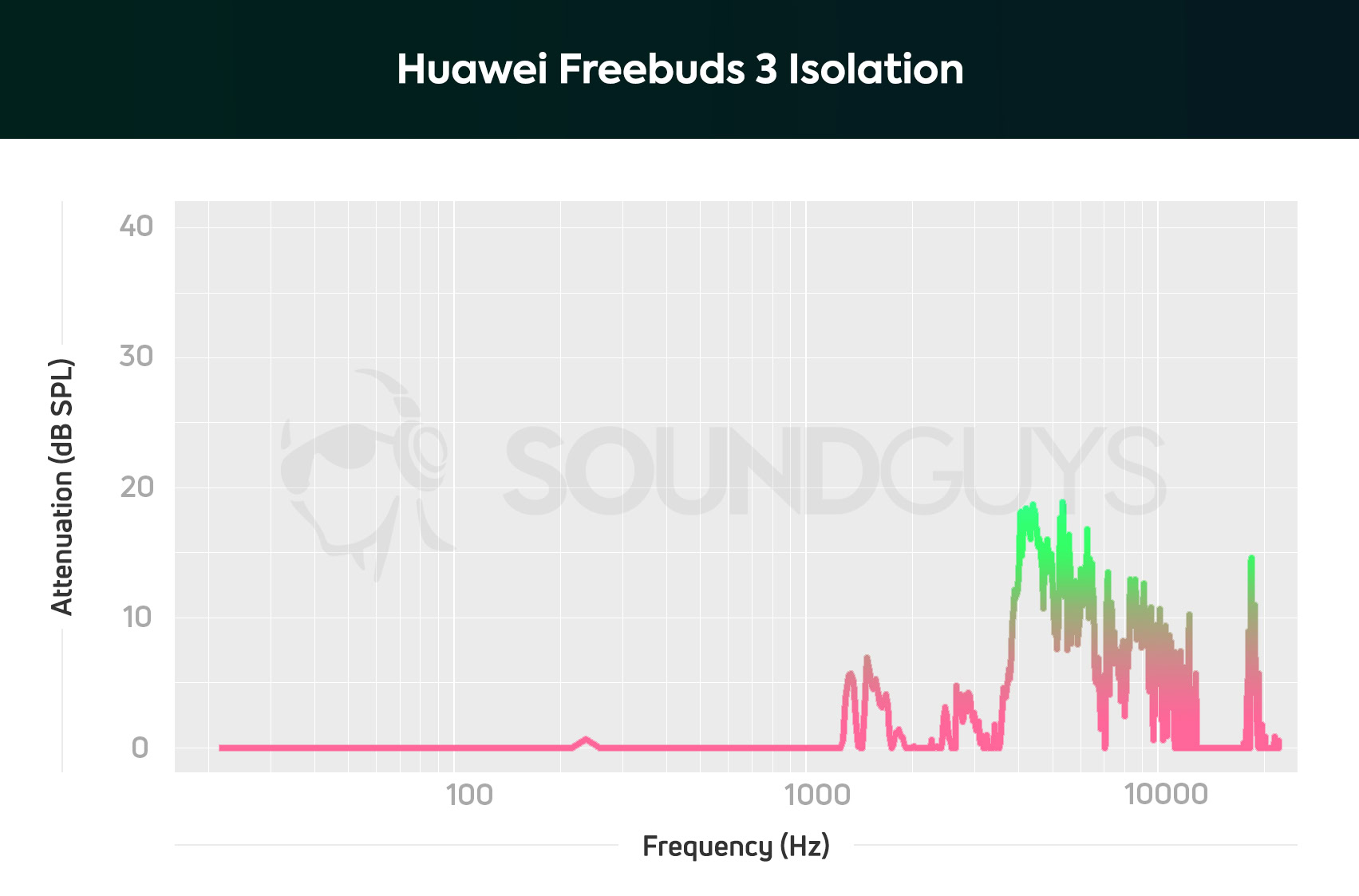
Active noise cancelling (ANC) is supposed to help stave off outside noise, but I found it overhyped. I was able to hear it in action, but the conditions had to be just right. For instance, when I turned on my microwave or the kitchen faucet, ANC cancelled out some, but not all, of the noise. I could still hear the hum, it was just a slightly different hum. And that was an ideal setting, with a quiet, constant din, and no other noises to drown out the effect. In normal, real-life use, I couldn’t hear much of a difference with ANC on or off.
I was pleasantly surprised by the sound quality of the HUAWEI FreeBuds 3.
If you use the FreeBuds 3 in quiet environments, you’ll probably want to keep ANC off (or tone it down using AI Life). You can actually hear a faint hush noise when listening at low volume that sounds a bit like rain outside.
All that said, ANC is still a great feature to have, and I would definitely activate it when travelling by train or plane, when even a little bit of attenuation helps. Just don’t expect any wonders.
Don’t miss: Best noise-cancelling true wireless earbuds
The fact that the FreeBuds 3 don’t block out noise can be a positive. If you don’t turn up the volume too high, you can easily maintain a conversation without having to take off your earbuds. Open-fit buds are also preferable for outdoor activities or just for walking on busy streets, when you need to keep an ear on your surroundings.
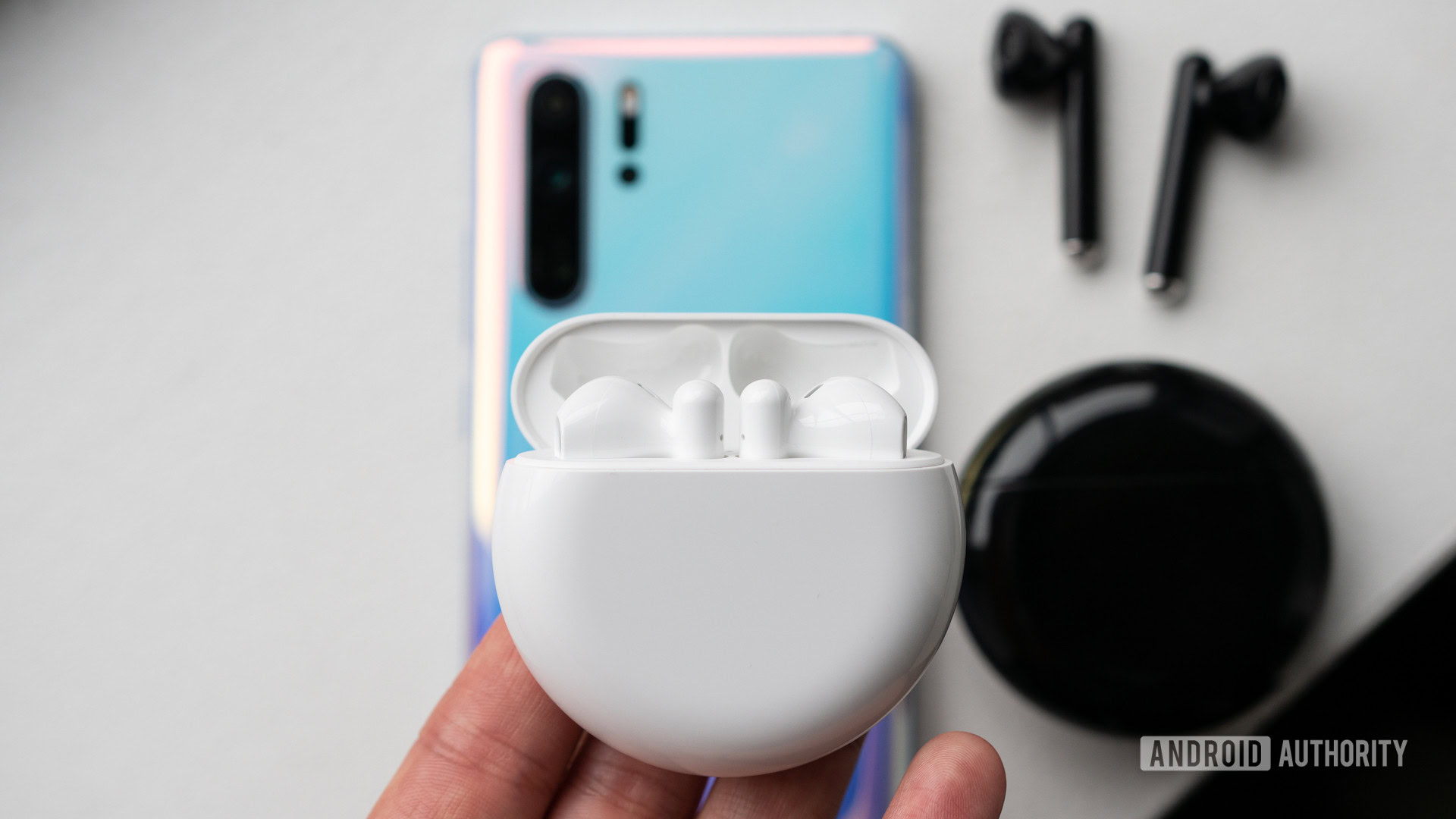
Long-term impressions (April 2020)
Since my original review of the FreeBuds 3 was published, I used them on an almost daily basis. My usage included listening to Spotify (music and podcasts), taking phone calls, and video calls on my computer.
I really enjoyed their comfort and ease of use. I basically stopped using my over-ear headphones (during work hours) and wired buds (while on the go), as the FreeBuds 3 are simply more pleasant to use.
I still enjoy the FreeBuds 3’s sound quality, but I basically forgot that there’s active noise cancelling on them. Nine times out of ten, I didn’t really hear a difference when activating this function.
I was pleasantly surprised about the microphone quality. I was able to take calls while walking my dog in the winter rain with a beanie and a hoodie covering the earbuds. I was expecting the sound of my voice to be muffled out, but that wasn’t the case.
The long-term battery life of the FreeBuds remained satisfactory. While I didn’t measure it precisely, it was close to the four hours promised by HUAWEI. The ability to juice up by simply placing the buds in the case is priceless.
The earbuds also received several software updates over the last months, that optimized sound quality and improved the stability of the wireless connection.
New version: HUAWEI FreeBuds 3i
In May 2020, HUAWEI announced the new FreeBuds 3i, which are similar to the FreeBuds 3, but feature silicone tips that go into your ear and attenuate external noise. We weren’t able to test these out, but the addition of silicone tips should greatly reduce outside noise and make the active noise cancelling more useful. That’s one of the main issues we had with the FreeBuds 3.
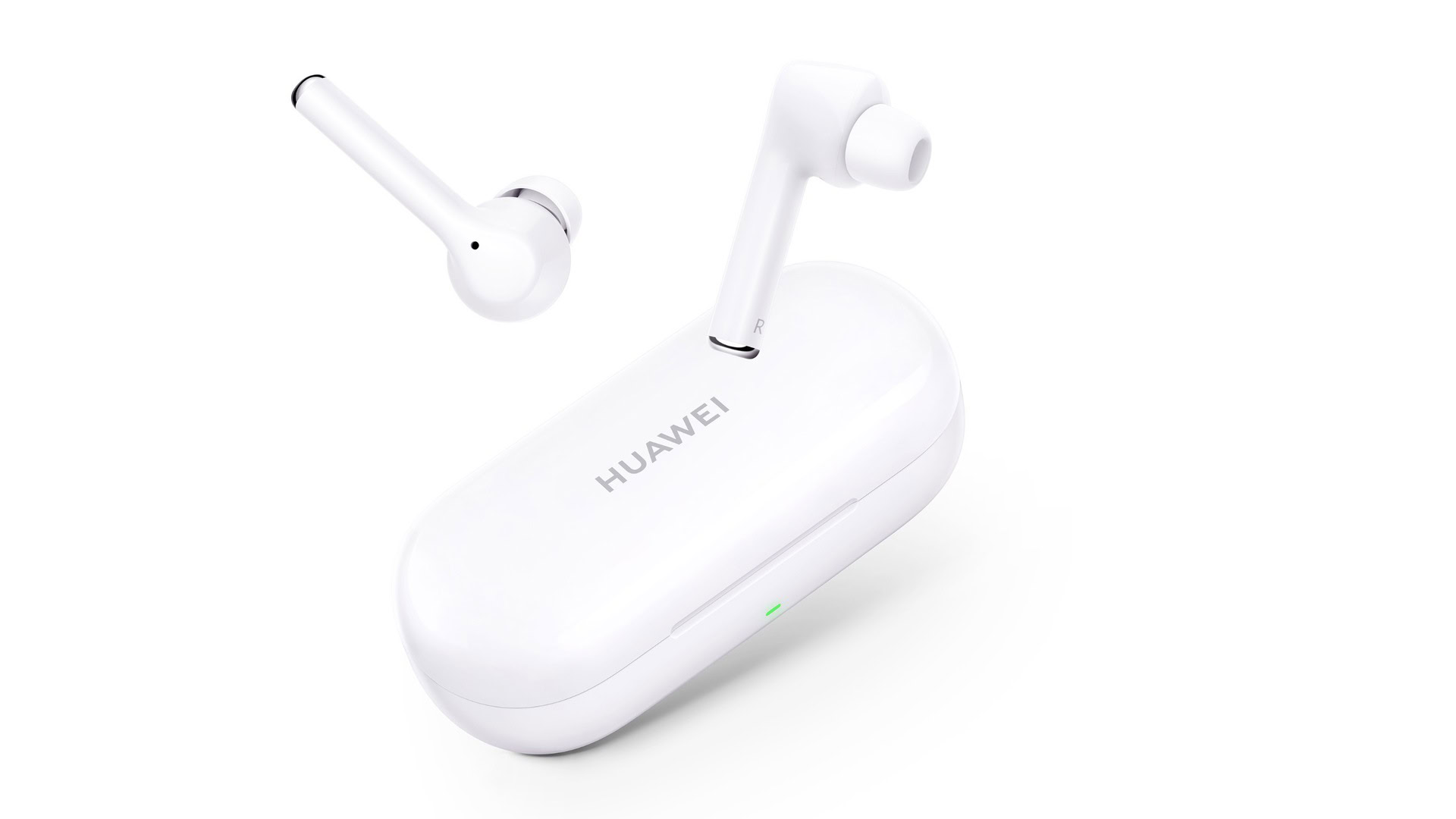
The FreeBuds 3i will be available in the UK for £89.99, starting May 20. The earbuds will be available in Ceramic White and Carbon Black.
Who are the HUAWEI FreeBuds 3 good for?
You should consider buying the FreeBuds 3 if:
- You own or plan to buy a high-end HUAWEI smartphone;
- You want wireless earbuds that are easy to use, and that remain comfortable for extended times;
- You want an AirPods-like product without the high price tag and ecosystem lock-in;
- You want noise cancelling, but don’t like in-ear designs;
- Want a portable design with good battery life.
You should look into other options if:
- You’re invested in the Apple ecosystem;
- Prefer in-ear designs that isolate outside noise;
- Want a perfect snug fit;
- Want a pair of earphones you can use and abuse while working out;
- You’re on a budget.
Should you buy the HUAWEI FreeBuds 3?
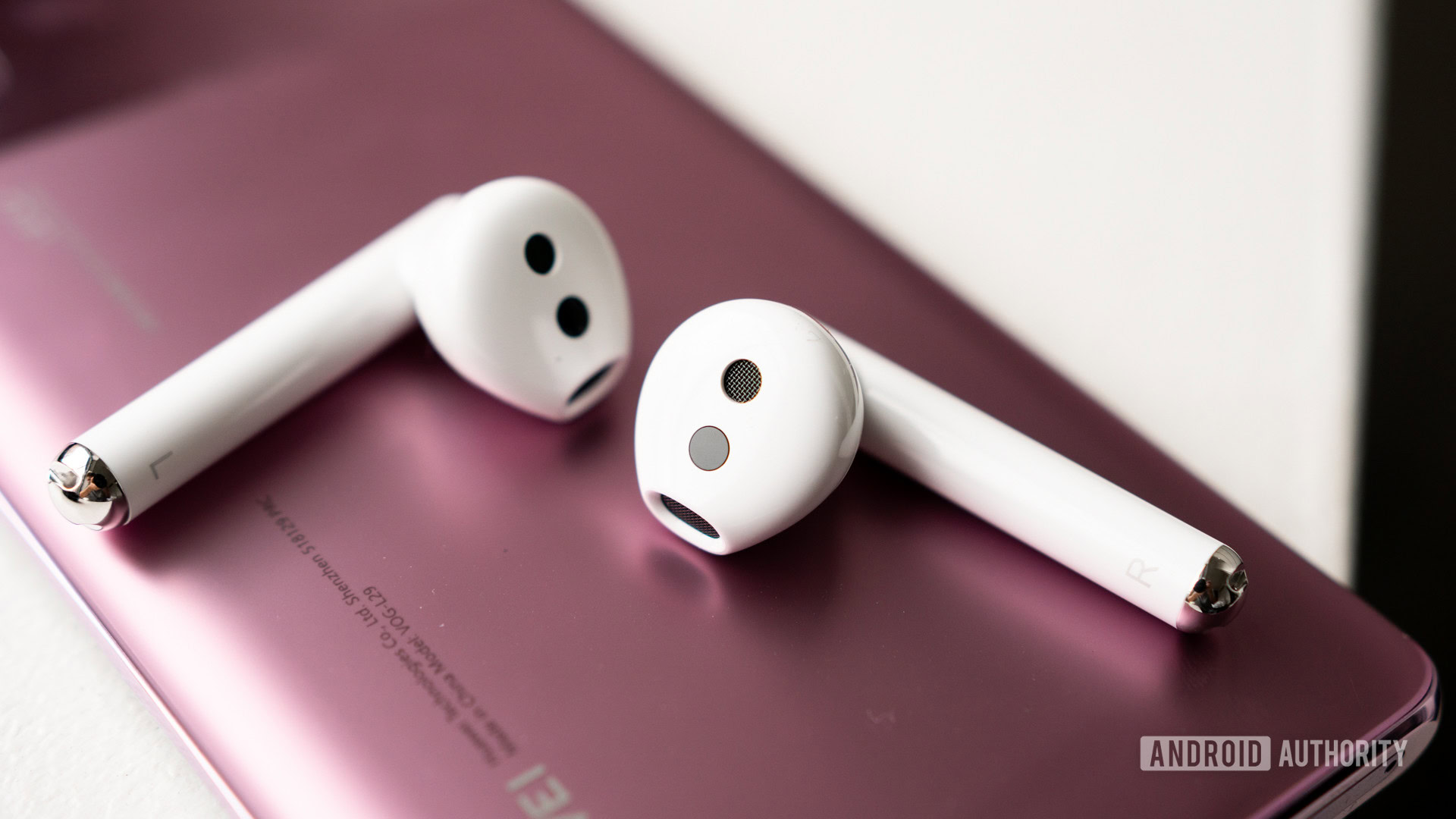
The HUAWEI FreeBuds 3 are now available globally including Europe, the Middle East, and APAC and LATAM countries. They won’t be sold in the United States. In Europe, they cost €179. In the UK, you’ll be able to buy them for £169.99 at major retailers including Amazon, Argos, and John Lewis, as well as in carrier and phone shops.
HUAWEI is likely to release the FreeBuds 3 in India, but as of April 2020, we only heard rumors. We’ll update this review once they officially launch.
For users of HUAWEI smartphones who want a great pair of earphones, the FreeBuds 3 are an obvious recommendation.
The FreeBuds 3 are a great choice for users who want an AirPods-like pair of earphones that are more compatible with Android devices. For users of HUAWEI smartphones who want a great pair of earphones, the FreeBuds 3 are an obvious recommendation. They sound great, they’re a pleasure to use, and the case provides extended battery life.
At £170, they’re not cheap, but the FreeBuds 3 are more affordable than the AirPods Pro, the Sennheiser Momentum, or the Sony WF-1000XM3. If you use a Samsung phone, the Galaxy Buds are cheaper and provide a snug fit, for better or worse. Cheaper platform-agnostic alternatives also exist.
Read more: The best true wireless earbuds of 2019 – SoundGuys
The FreeBuds 3 are available in white, black, and – since February – in a snazzy red. I recommend the white model, as the black one tends to pick up fingerprints and grease, which really cheapens their look and feel. I didn’t get to test out the red model.
And that concludes our HUAWEI FreeBuds 3 review. Are you interested in these earphones?